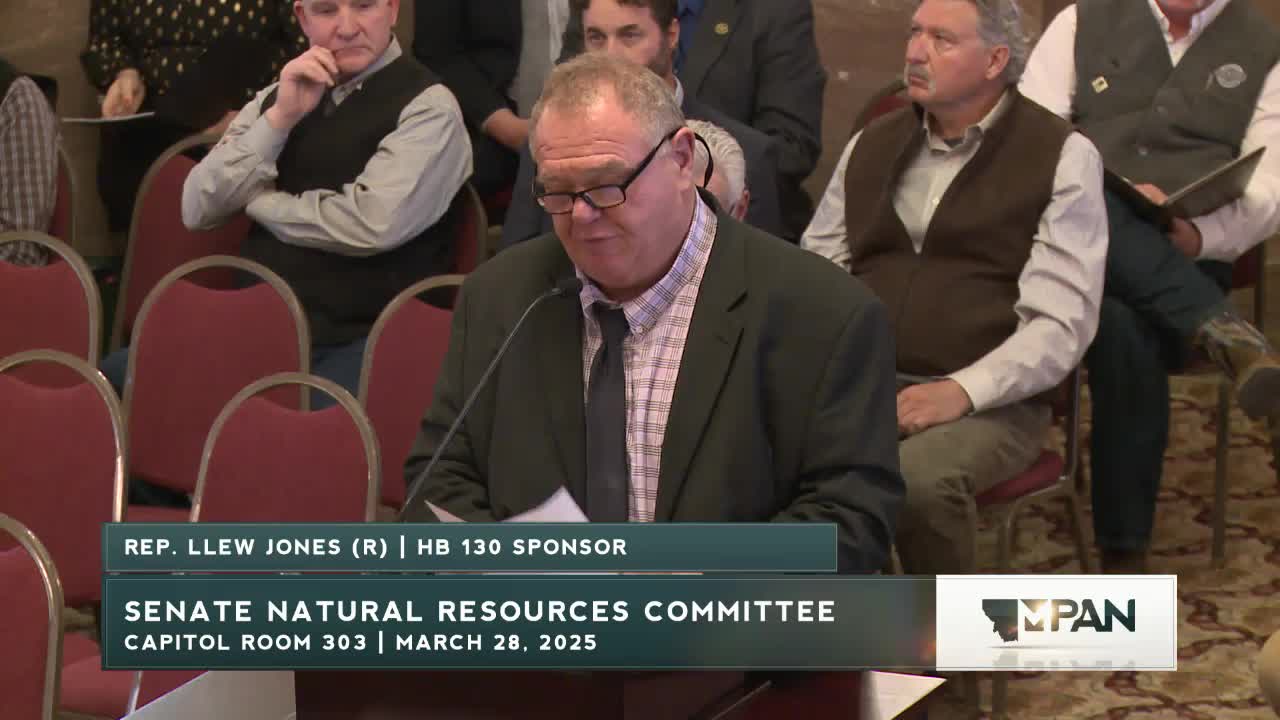Montana lawmakers advance House Bill 130 to improve wildfire response efficiency
March 28, 2025 | 2025 Legislature MT, Montana
This article was created by AI summarizing key points discussed. AI makes mistakes, so for full details and context, please refer to the video of the full meeting. Please report any errors so we can fix them. Report an error »

House Bill 130 is set to revolutionize wildfire management in Montana, aiming to enhance the state's response to fires that threaten private property and communities. During a recent Senate Natural Resources meeting, lawmakers discussed the bill's potential to allow the Department of Natural Resources and Conservation (DNRC) to act more swiftly on fires near federal land boundaries, which have historically posed challenges due to bureaucratic delays.
The bill's sponsor highlighted that last year, the DNRC successfully contained 95% of state fires to under 10 acres. However, fires igniting just off state land often escalated due to delayed responses. A notable example was the Horse Gulch Fire, which grew to 15,000 acres after the DNRC was unable to intervene promptly. The proposed legislation aims to establish a clear directive for the DNRC to engage more aggressively in these boundary situations, thereby protecting lives and property while reducing smoke pollution.
Amanda Kaster, director of the DNRC, expressed strong support for the bill, emphasizing its role in improving fire management and safety. She noted that the DNRC is responsible for wildfire protection across 60 million acres, with over 96% of that responsibility involving private property. The bill is designed to enhance coordination between state and federal agencies, ensuring that firefighting efforts are transparent and effective.
The meeting also featured endorsements from various stakeholders, including representatives from the Montana Logging Association and the Montana Farm Bureau Federation, who underscored the bill's importance for resource protection and agricultural safety. They stressed that timely fire suppression is crucial for preventing devastating losses to farms and ranches.
As the bill moves forward, it is expected to reshape the landscape of wildfire management in Montana, fostering a proactive approach to fire suppression that prioritizes community safety and environmental health. The anticipated renegotiation of inter-agency agreements in 2026 will further clarify the responsibilities and expectations for fire response, setting the stage for a more collaborative and effective firefighting strategy in the state.
The bill's sponsor highlighted that last year, the DNRC successfully contained 95% of state fires to under 10 acres. However, fires igniting just off state land often escalated due to delayed responses. A notable example was the Horse Gulch Fire, which grew to 15,000 acres after the DNRC was unable to intervene promptly. The proposed legislation aims to establish a clear directive for the DNRC to engage more aggressively in these boundary situations, thereby protecting lives and property while reducing smoke pollution.
Amanda Kaster, director of the DNRC, expressed strong support for the bill, emphasizing its role in improving fire management and safety. She noted that the DNRC is responsible for wildfire protection across 60 million acres, with over 96% of that responsibility involving private property. The bill is designed to enhance coordination between state and federal agencies, ensuring that firefighting efforts are transparent and effective.
The meeting also featured endorsements from various stakeholders, including representatives from the Montana Logging Association and the Montana Farm Bureau Federation, who underscored the bill's importance for resource protection and agricultural safety. They stressed that timely fire suppression is crucial for preventing devastating losses to farms and ranches.
As the bill moves forward, it is expected to reshape the landscape of wildfire management in Montana, fostering a proactive approach to fire suppression that prioritizes community safety and environmental health. The anticipated renegotiation of inter-agency agreements in 2026 will further clarify the responsibilities and expectations for fire response, setting the stage for a more collaborative and effective firefighting strategy in the state.
View full meeting
This article is based on a recent meeting—watch the full video and explore the complete transcript for deeper insights into the discussion.
View full meeting
